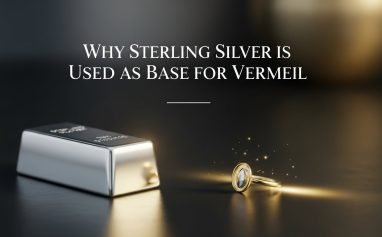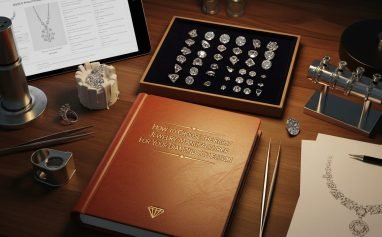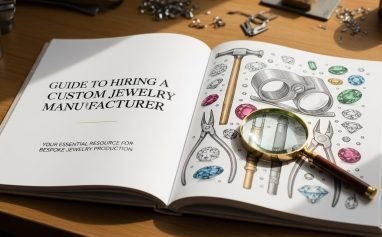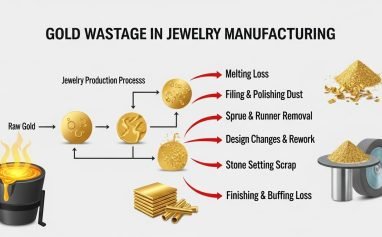Mold Charges in Jewelry Manufacturing
In jewelry manufacturing, one of the most common yet often misunderstood costs is the mold charge. Whether you are a startup brand launching your first collection or an established retailer scaling production, understanding mold charges is crucial. These charges affect your initial investment, design flexibility, and long-term cost efficiency.
This guide breaks down everything you need to know about mold charges in jewelry manufacturing, supported with real-world insights, cost ranges, and brand-focused strategies for 2026.
1. What Are Mold Charges in Jewelry Manufacturing?
A mold charge refers to the fee a manufacturer charges to create a mold of a jewelry design before mass production.
- A mold is essentially a replica of your design in rubber, silicone, or metal that allows the manufacturer to create consistent duplicates.
- Mold making is a one-time cost (per design) unless the mold wears out or the design changes.
Think of molds as the foundation of jewelry mass production—without them, each piece would have to be hand-carved from scratch, which is time-consuming and costly.
2. Why Do Jewelry Brands Pay Mold Charges?
There are three main reasons why mold charges exist:
- Precision in Reproduction – A mold ensures every piece matches the original design exactly, which is critical for brand consistency.
- Efficiency in Manufacturing – Once a mold exists, production becomes faster and cheaper.
- Durability in Scaling – Molds can produce hundreds (sometimes thousands) of identical units, helping brands meet demand without compromising quality.
For brands, mold charges are an investment in long-term scalability.
3. Types of Molds Used in Jewelry
Not all molds are created equal. The type of mold influences cost, durability, and quality:
- Rubber Molds – Affordable and widely used; suitable for wax injection casting.
- Silicone Molds – More expensive but capture intricate details better.
- Metal Molds – High durability, used for large-scale production of base metals.
Industry Insight (2025):
- Rubber molds can last up to 500 injections.
- Silicone molds can last up to 1000 injections with consistent quality.
- Metal molds can last for tens of thousands of pieces but come at a higher upfront cost.
4. How Much Do Mold Charges Cost?
Mold charges vary depending on complexity, size, and material.
Average Mold Charge Ranges (2025–2026):
- Basic Rubber Mold: $30 – $80 per design
- Silicone Mold: $50 – $120 per design
- Complex/Multi-Part Mold: $150 – $500+
- Metal Mold (for mass production): $500 – $2000+
For a jewelry brand starting a collection of 20 designs, mold charges may range from $600 – $4000 depending on the designs’ complexity.
5. Factors That Influence Mold Charges
Several factors impact how much you’ll pay:
- Design Complexity – Intricate filigree or 3D designs cost more.
- Size of Jewelry – Bigger pieces require larger molds.
- Mold Material – Rubber is cheaper, silicone and metal are pricier.
- Volume of Orders – Some manufacturers waive or discount mold charges for bulk orders.
- Revision Needs – If a mold needs rework, additional charges may apply.
6. Pros of Mold Charges
- Consistency in Quality – Each piece is identical.
- Scalability – Easy to expand production.
- Cost-Efficiency – Once the mold is made, unit costs drop.
- Longevity – A well-made mold can serve for years.
7. Cons of Mold Charges
- Upfront Cost – Can feel expensive for startups.
- Limited Flexibility – Changing designs means making a new mold.
- Wear & Tear – Molds eventually degrade and need replacement.
8. Mold Charges vs. CAD Charges
Many brands confuse CAD (Computer-Aided Design) charges with mold charges.
- CAD Charges = The cost of creating a digital 3D model of your design.
- Mold Charges = The cost of creating a physical mold for production.
In most cases, you’ll pay both if you’re creating custom designs.
9. Industry Practices in 2026
- Some manufacturers absorb mold charges if the client commits to a high-volume order (e.g., 500+ units).
- Shared molds are rare—most molds are exclusive to the brand for intellectual property protection.
- Eco-friendly mold practices are on the rise, with some factories using recyclable silicone to reduce waste.
Stat: According to a 2025 jewelry manufacturing report, 67% of brands prefer silicone molds for detail accuracy, even at a higher cost.
10. How Brands Can Reduce Mold Costs
- Plan Collections Strategically – Group similar designs to reduce mold variations.
- Negotiate with Manufacturers – Some may offer free molds for larger orders.
- Focus on Evergreen Designs – Invest in molds for designs you’ll sell long-term.
- Work with Trusted Partners – Experienced manufacturers like Nakassi optimize mold durability to maximize ROI.
11. Mold Charges vs. Gold Vermeil & Plating Costs
Here’s how mold charges compare with other jewelry production costs:
- Mold Charges – One-time, upfront investment per design.
- Gold Vermeil / Plating Costs – Recurring costs applied per piece, depending on thickness and finish.
A brand might pay $80 for a mold once, but plating may cost $5–$15 per unit depending on thickness. This means molds are fixed investments, while plating is an ongoing expense.
12. Should Brands Worry About Mold Charges?
For new brands, mold charges can feel intimidating, but they are small in comparison to the value they deliver. If a mold costs $100 but enables you to produce 500 rings, the per-unit mold cost is just $0.20—a negligible addition compared to the retail price.
Pro Tip: Brands should see mold charges as a long-term asset, not just a cost.
Conclusion
Mold charges in jewelry manufacturing may seem like a hidden cost, but they are actually a cornerstone of scalable, consistent, and high-quality production.
For brands entering 2026, understanding mold charges means:
- Budgeting better,
- Negotiating smarter, and
- Building collections that balance creativity with efficiency.
At Nakassi, molds are treated as the backbone of production—designed for durability, precision, and brand exclusivity. Whether you’re launching a new line or scaling an existing one, knowing how mold charges work will help you turn upfront investments into long-term brand growth.

Brijesh brings a decade of experience in SEO and a deep love for jewelry to his writing. He excels at creating content that shines both on the page and in search engines, ensuring every story about gems and craftsmanship reaches the right audience.








